Tepe Godin
Q774339Godin Tepe: Iron Age settlement in western Iran, along the road from Ecbatana to Behistun and Mesopotamia.
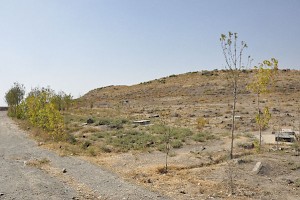
In the first quarter of the first millennium, nomadic cattle-herders speaking an Indo-Iranian language infiltrated the Zagros and settled among the native population. They are mentioned for the first time in the Assyrian Annals as enemies of king Šalmaneser III (r.858-824). The inhabitants of the KURMa-da-a ("the land of the Medes") were divided into several smaller clans, and although the Assyrian kings were able to subdue some of them, they never conquered all of Media.
One of the Median princes lived on a hill that is now called Godin Tepe, which dominated a fertile plain along the road from Ecbatana, the Median capital, to the west, to Behistun and beyond, to Babylonia and Assyria. The fortified manor consisted of at least three halls (reminiscent of the throne hall of Cyrus' Palace P in Pasargadae), several storage rooms, and a comparatively small throne hall with banks on four sides. There was also a kitchen with three ovens and a drain.
On the north face of the hill, the remains of a heavy wall with five bastions have been excavated. The cemetery was to the south of the ancient town. (Today, it is again in use.) The site is not unlike nearby Tepe Nush-e Jan or the Urartian fort Çavustepe, which also date to the Iron Age.
Although Tepe Godin offers a splendid view of the plain, the modern visitor will be slightly disappointed by the site itself. The reason is that archaeologist T. Cuyler Young Jr., who was in charge of the excavation of the site in 1965-1973, made a very deep sounding and destroyed part of the Median citadel. He discovered that the hill contained at least nine earlier strata, going back to the Copper Age.
One of these earlier towns, Godin Tepe IV, appears to have been destroyed by humans in c.2400 BCE. One skeleton was found under a collapsed wall; another one, with an arrow in his vertebrae, belonged to someone who died of starvation after he had become paralyzed.
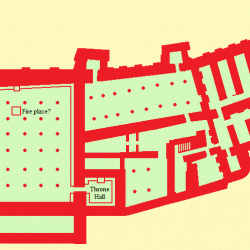 Tepe Godin, Map |
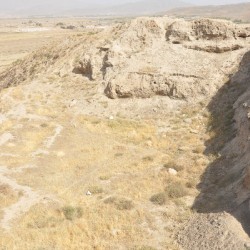 Tepe Godin, The deep sounding |
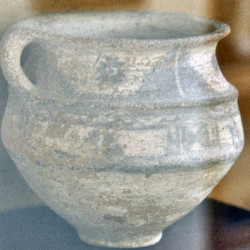 Tepe Godin, Pottery from level III |
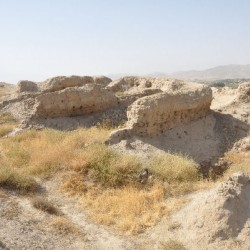 Tepe Godin, Store rooms |